The Right Clothes for Pets That Can Protect Them From the Cold
5-Minute Crafts found out what pets require warm clothes and how to choose them correctly.
If dogs need clothes in cold seasons
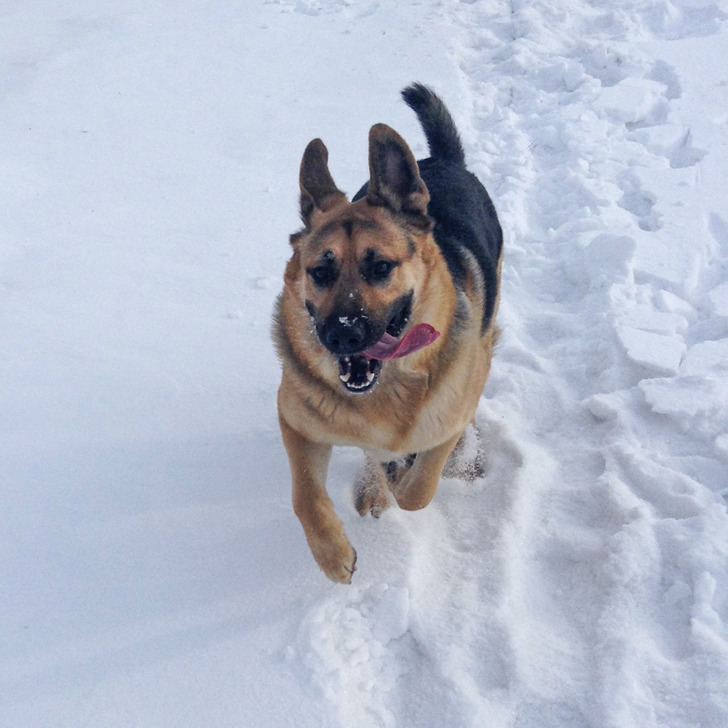
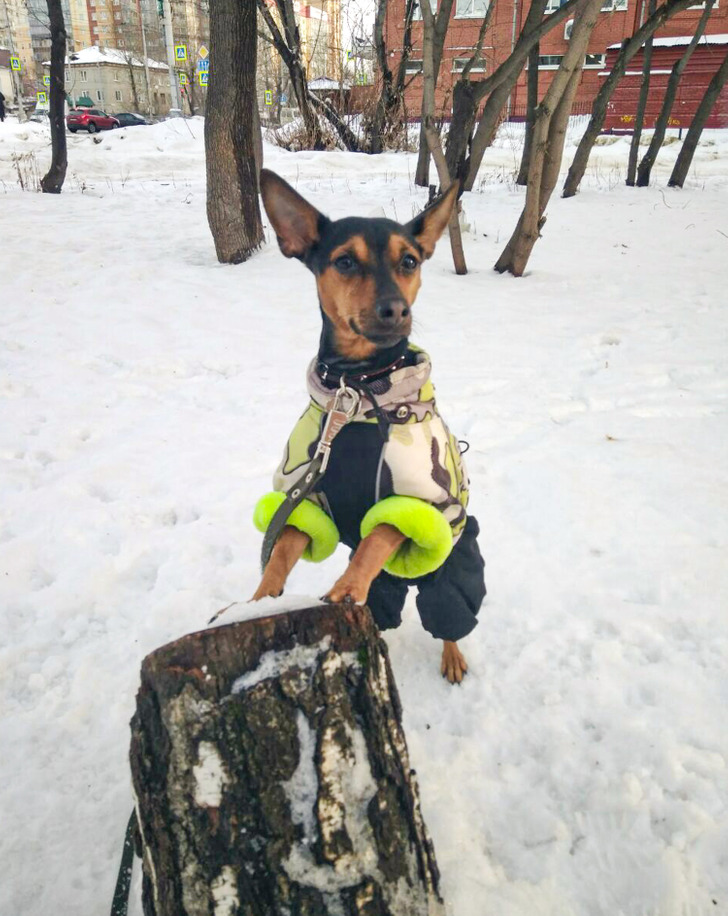
Other dogs, on the contrary, can hardly stand the cold because of their small size, short fur, or their habit of living in a warm climate, like the Chinese Crested, Chihuahua, Italian Greyhound, many terriers, Pinchers, and others. They are also in the risk group that doesn’t tolerate low temperatures and runs the risk of getting frostbite or hypothermia. In other words, they will need clothing for walking in the cold season.
This group includes:
- Puppies
- Old dogs
- Sick dogs
- Dogs with a weak immune system
- Breeds with short legs
- Dogs with big ears
- Dogs that are facing the cold for the first time
If, for some reason, you can’t determine whether you need to put warm clothes on your dog, ask your vet.
It’s important!
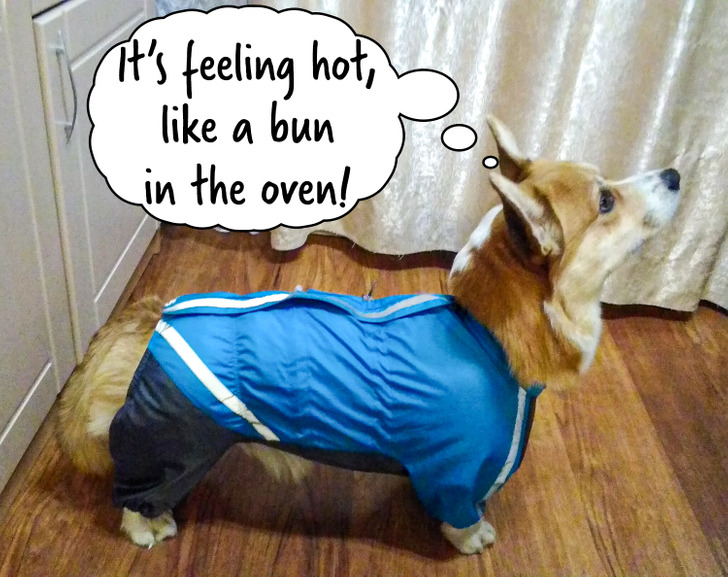
To make your pet feel comfortable, it’s important to remember that jackets and sweaters should be removed once indoors. It will prevent the dog from overheating and it won’t rub the skin. Clothes are designed only for walking outdoors in cold weather.
It’s worth remembering that even dogs with thick fur have their ears, nose, and paws exposed to the cold, and that’s why if it’s not going to be an active walk for your pet, it’s better to shorten the walking time. Also, you can use boots if you are going to have a long walk at temperatures lower than 20° F.
If cats need clothes
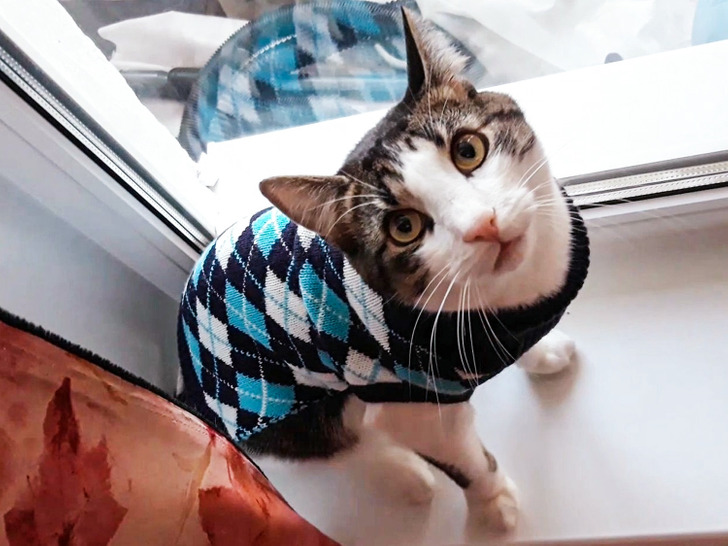
Despite the fact that felines look super cute in those warm sweaters, experts almost always say that these furry guys don’t need any clothing. And here is why:
- Cats have their own fur and they can overheat due to the extra layer.
- If a clothing element catches on something or if the animal gets tangled in it, it can lead to trauma or an accident.
- Clothes are a source of stress for some cats.
How to choose clothes for a pet
If your pet belongs to the category that needs additional protection from the cold, then you need to take into account the size, material, accessories, membrane, weather, time of day, and character of the animal when choosing clothes for them.
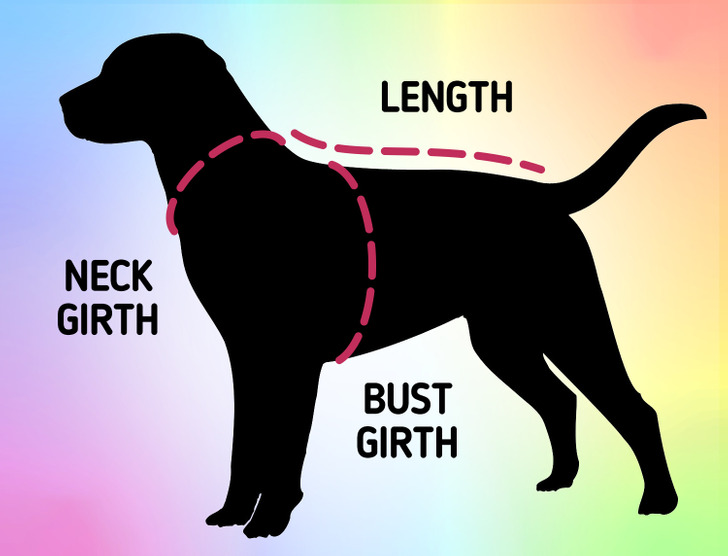
- Size: Clothes of the wrong size will cause discomfort for the animal. To find the right size, measure the following indicators: neck girth, bust girth, and the distance from the neck to the waist. It will also be good to know the exact weight. Clothes should be covering the neck, the chest, the belly, and the distance from the neck to the tail. The most effective way is to take the pet with you to the store and try on different variants.
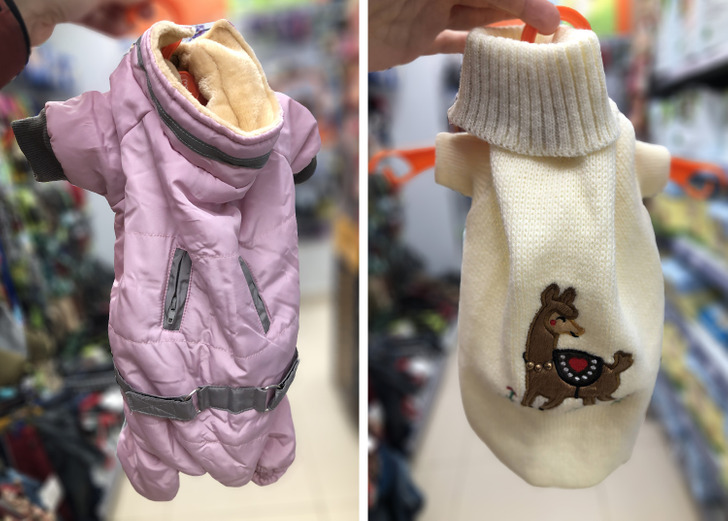
- The material should be warm. Padded jackets and knitted vests, coats and jackets with additional warm lining or thermal insulation, or down jackets with natural or artificial filling can be good options. Fur can be a good insulating material but you will have to wash it often and it can cause itching. The combination of fur with cotton or acrylic can become a good alternative.
- Additional parts, like zippers, shouldn’t be easy to chew off.
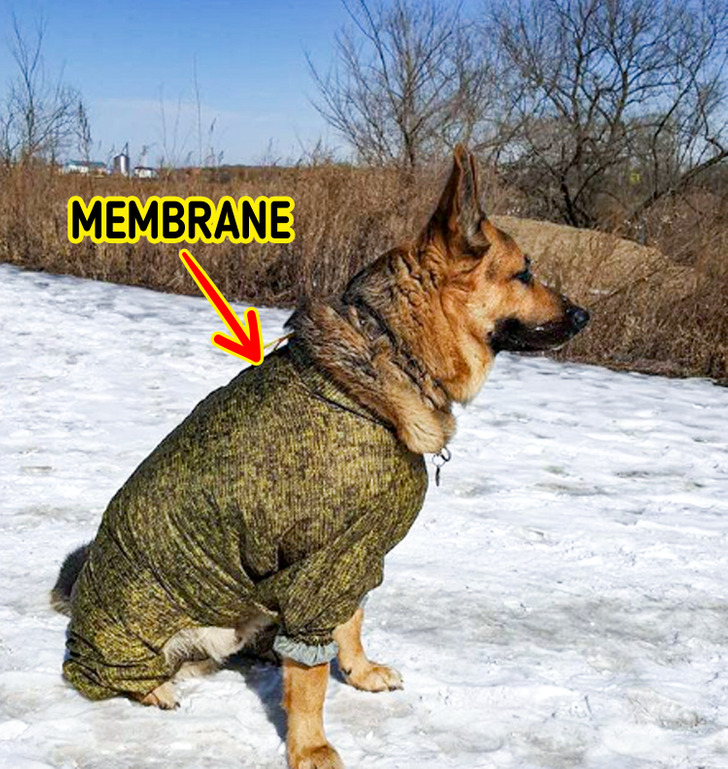
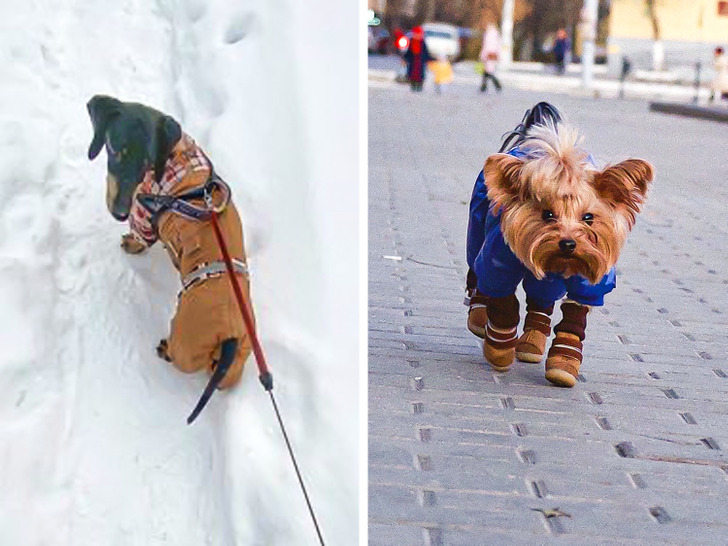
- Weather condition: Find out what the weather is like in your area and the time one session of walking takes. Normally, most breeds don’t require clothing if the temperature is above 45° F and if your walk takes about 10 minutes.
- Time of day: Make sure to opt for light-reflecting elements for evening walks.
- Character: If your dog is active and runs a lot during walks, you’d better opt for clothes that can get twisted. The presence of Velcro closures will ease the dressing process, but these elements go out of order quickly.
What clothes are required for different weather conditions
- Above 45° F — most pets feel comfortable at this temperature without additional clothing.
- From 32° F to 45° F — put a sweater on your pet if it doesn’t tolerate cold or if it is in the risk group.
- From 15° F to 32° F — a coat would be good for a dog from the risk group for a quick walk; a coat and boots will be good for a medium walk; boots will be enough for a pet out of the risk group for an active walk; and warm clothes and boots will be perfect for a long, inactive walk. In the latter case, you can also grab a blanket if you plan on taking long stops.
- Below 15° F — try to minimize your time outside and make sure to dress your pet in warm shoes and clothes.
Signs that your pet is feeling cold
It’s time to take your pet to a warm place if:
- It is trembling.
- It is lifting its paws.
- It doesn’t want to move.
- It is tucking its tail.
- It is whining and behaving anxiously.
- There is a lot of ice and snow on its paws.